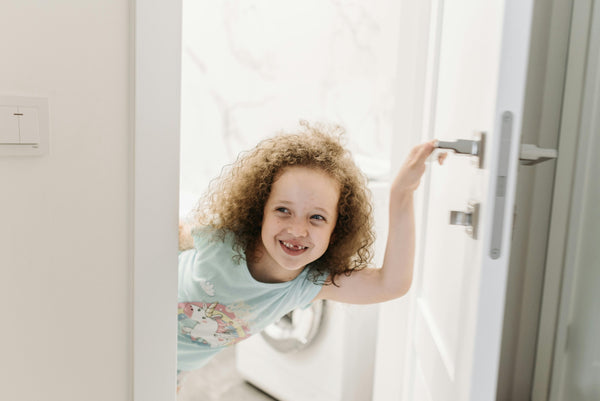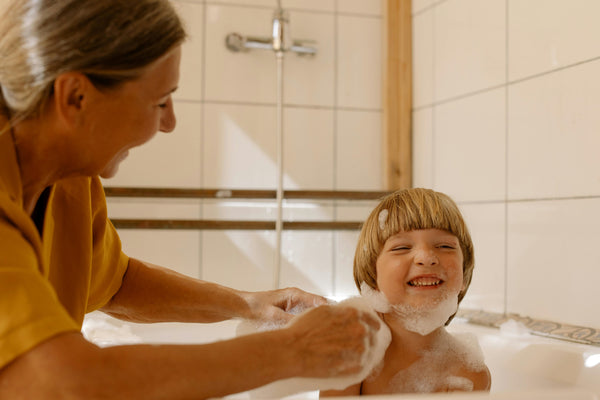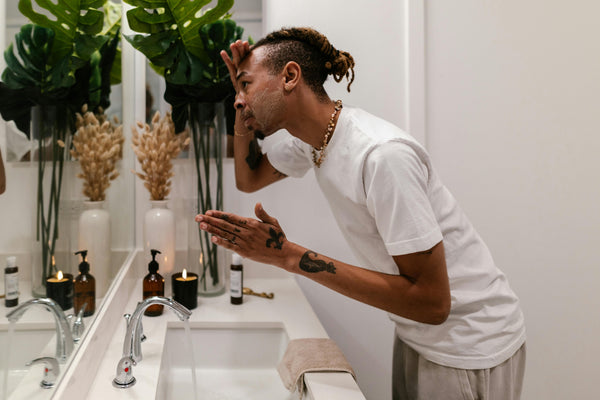 air quality
air quality
How to Keep Your Home Gym Feeling Fresh
When you think about improving your home workout, you probably focus on perfecting your form, equipment, or even your playlist. But there's another element that can make or break your...
Explore our diverse range of topics, from air quality and skincare to home wellness and sleep improvement. Discover how Canopy products can enhance your daily life and promote overall well-being.
Want to get wellness right in your inbox? Drop your email below.
 air quality
air quality
How to Keep Your Home Gym Feeling Fresh
When you think about improving your home workout, you probably focus on perfecting your form, equipment, or even your playlist. But there's another element that can make or break your...
 air quality
air quality
Do You Need an Air Purifier for Your Nursery?
Babies have sensitive lungs, smaller airways that are developing, and breathe faster than adults. Discover how a Canopy air purifier will improve your nursery.
 air quality
air quality
Why Indoor Air Quality Is Important for Pet Owners
Maintaining optimal indoor air quality is crucial for you, your family, and your pets. Explore the relationship between pets & healthy air in your home.
 allergies
allergies
Managing Allergy Season With Canopy
After a long, cold winter, we all look forward to warm, sunny days spent outdoors. Although a breath of fresh air is always welcome, pollen and other airborne substances can quickly put...
 allergies
allergies
5 Tips for Sleeping Better With Allergies
When allergy season hits, do you spend your days feeling zoned out because you can’t get a good night’s rest? If so, you aren’t alone. As if the congestion, sneezing, scratchy...
 allergies
allergies
Why Humidifiers Are Essential for Campus Living
This content has been reviewed and updated on August 14, 2024. For many college students, living in a dorm room or campus apartment is a typical experience. It offers an...
 aroma
aroma
Canopy's Good Night Guide to Better Sleep
At Canopy, we dedicate ourselves to developing simple but smart solutions to improving at-home beauty and wellness routines. While a balanced diet, exercise, and hydration are all (rightfully) touted as...
 aroma
aroma
Aromatherapy the Canopy Way
What is aromatherapy? When you hear the word, you likely think of using pleasant scents to create a calming atmosphere. While this is indeed a large perk of aromatherapy, it...
 aroma
aroma
First Apartment Must-Haves
Moving from your childhood home or college dorm room into your first apartment is the beginning of a new chapter. From choosing the perfect lighting to arranging furniture, there are...
 baby
baby
Do You Need an Air Purifier for Your Nursery?
Babies have sensitive lungs, smaller airways that are developing, and breathe faster than adults. Discover how a Canopy air purifier will improve your nursery.
 baby
baby
How to Help Young Children Be More Independent at Bath Time
Knowing the answer to “what age do kids bathe themselves” requires patience and preparation. Discover how to give your kids more independence at bath time.
 baby
baby
How to Make Toddler Bath Time More Enjoyable
Canopy takes a deep dive into making toddler bath time more fun. Discover strategies to help your little one feel more excited about their bathing routine.
 bathroom
bathroom
Kick Off Summer With Home Pedicures
Indulging in a pampering foot care routine at home can leave your feet looking and feeling amazing. View our ultimate step-by-step home foot care routine.
 bathroom
bathroom
How to Take Luxurious Baths at Home
A warm bath after a long day is one of life’s simple pleasures. If you’re looking to create a luxury spa-like ambiance with your next bath, we have some tips.
 bathroom
bathroom
How to Raise Humidity for Thriving House Plants
There’s a meme that suggests humans are just houseplants with more complicated emotions because we, too, need plenty of oxygen, sunshine, and water to thrive. Although we are slightly more...
 haircare
haircare
Why Handheld Showerheads Are Great for Babies and Toddlers
Is bath time fun in your home, or does bathing your little one usually end with tears and puddles of water everywhere? Some kids have simply outgrown their infant tub...
 haircare
haircare
How to Create an At-Home Spa Scalp-Care Routine
Although everyone needs “me time,” not everyone has the opportunity to go to a spa for massages, haircare, and other treatments. An at-home spa is a convenient solution for time-pressed...
 haircare
haircare
What to Know About Scalp Health for Curly Hair
Those of us with curly hair can sometimes have a love-hate relationship with it. Trying to maintain glossy, bouncy locks is often easier said than done. Although it might appear...
 home
home
How to Keep Your Home Gym Feeling Fresh
When you think about improving your home workout, you probably focus on perfecting your form, equipment, or even your playlist. But there's another element that can make or break your...
 home
home
Why Indoor Air Quality Is Important for Pet Owners
Maintaining optimal indoor air quality is crucial for you, your family, and your pets. Explore the relationship between pets & healthy air in your home.
 home
home
Canopy’s Guide to Indoor Air Quality
Many variables influence indoor air quality. Take a closer look at these factors and what you can do to achieve optimal indoor air quality for better wellness.
 humidifiers
humidifiers
Air Purifier vs. Humidifier
If your air is too dry or too moist, you may experience discomfort. Learn the difference between a humidifier & an air purifier, and which one is best for you.
 humidifiers
humidifiers
How to Purify Your Home’s Indoor Air
Air pollution can significantly impact your health and quality of life, often without notice. Here are some effective ways to improve your home's air quality.
 humidifiers
humidifiers
Canopy's Guide to Indoor Humidity and Mold
Humidifiers solve the age-old problem of dry, uncomfortable indoor air, especially in the cooler seasons. But can you have too much of a good thing? While perusing indoor humidity solutions,...
 portable
portable
What Is a Portable Humidifier?
Investing in a portable humidifier can dramatically improve your quality of life, from helping you sleep better and enjoy clearer skin to alleviating cold and flu symptoms. With so many...
 portable
portable
How to Avoid Dry Skin & Sinuses on Cruise Ships
Booking a winter cruise is an exciting way to escape frigid temperatures and dreary weather. However, as you’re lounging by the pool or enjoying the endless onboard entertainment, you might...
 portable
portable
Canopy's Good Night Guide to Better Sleep
At Canopy, we dedicate ourselves to developing simple but smart solutions to improving at-home beauty and wellness routines. While a balanced diet, exercise, and hydration are all (rightfully) touted as...
 shower
shower
Benefits of Filtered Water for Skincare
Filtered drinking water has been a popular choice for some time due to its refreshing taste—in fact, 77% of Americans use filtered water in their homes1. But filtration does more...
How to Treat Dry Skin From Chronic Illnesses & Autoimmune Diseases
While many factors can cause dry skin, from cold weather to certain medications, some can be harder to treat than others. Many autoimmune diseases and chronic illnesses can create chronic...
 shower
shower
How to Maximize Small Bathroom Space
Whether you rent or own your home, updating your bathroom can freshen up the space by adding style and enhancing functionality. If you’re working with a small bathroom, it may...
 Skincare
Skincare
Kick Off Summer With Home Pedicures
Indulging in a pampering foot care routine at home can leave your feet looking and feeling amazing. View our ultimate step-by-step home foot care routine.
 Skincare
Skincare
What Is a Portable Humidifier?
Investing in a portable humidifier can dramatically improve your quality of life, from helping you sleep better and enjoy clearer skin to alleviating cold and flu symptoms. With so many...
 Skincare
Skincare
Benefits of Filtered Water for Skincare
Filtered drinking water has been a popular choice for some time due to its refreshing taste—in fact, 77% of Americans use filtered water in their homes1. But filtration does more...
 sleep
sleep
Canopy's Good Night Guide to Better Sleep
At Canopy, we dedicate ourselves to developing simple but smart solutions to improving at-home beauty and wellness routines. While a balanced diet, exercise, and hydration are all (rightfully) touted as...
 sleep
sleep
Aromatherapy the Canopy Way
What is aromatherapy? When you hear the word, you likely think of using pleasant scents to create a calming atmosphere. While this is indeed a large perk of aromatherapy, it...
 sleep
sleep
5 Tips for Sleeping Better With Allergies
When allergy season hits, do you spend your days feeling zoned out because you can’t get a good night’s rest? If so, you aren’t alone. As if the congestion, sneezing, scratchy...
 wellness
wellness
How to Take Luxurious Baths at Home
A warm bath after a long day is one of life’s simple pleasures. If you’re looking to create a luxury spa-like ambiance with your next bath, we have some tips.
 wellness
wellness
Cool Mist vs. Warm Mist Humidifier: Which One Should I Use?
Incorporating a humidifier into your environment is an excellent way to enhance indoor air quality. But before you select the right device for your space, one of the first decisions...
 wellness
wellness
What Is a Portable Humidifier?
Investing in a portable humidifier can dramatically improve your quality of life, from helping you sleep better and enjoy clearer skin to alleviating cold and flu symptoms. With so many...